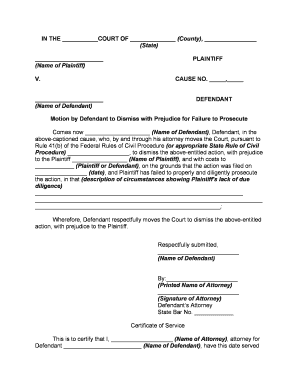
Eastern alleges that the Court has subject matter jurisdiction over this case pursuant to 28 U.S.C. Long Construction Company files this motion to dismiss, asking the Court to dismiss Eastern States Construction Company’s complaint for lack of subject matter jurisdiction.

Below is an example introduction where the defendant is moving to dismiss the complaint for lack of subject matter jurisdiction: However, the introduction should at least mention the applicable law. Since a defendant will provide cites later in the motion, it is not necessary to provide them in the introduction.Ĭourts deal with motions to dismiss frequently, so an individual should in most instances omit a detailed explanation of “the law” in the introduction of the motion to dismiss. In the introduction, an individual can choose to discuss the applicable legal principles. However, it should provide some general facts and analysis and let the court know that the motion seeks dismissal of the plaintiff’s complaint.

Judges review motions to dismiss with exacting scrutiny. Ultimately, a defendant should think thoroughly about the likelihood of success before filing a motion to dismiss, and should not include weak or substandard arguments, as they will likely detract from the strongest arguments. Know the standard that must be met and craft an explanation of the standard.Of course, if a defendant is only asking the Court to dismiss certain claims, those claims must be specified.Īfter deciding to file a motion to dismiss, drafting a motion to dismiss, a defendant should adhere to the following suggestions and guidelines to write the most effective and persuasive motion possible: An individual may also move to dismiss the entire complaint or only specific causes of action. Failure to state a claim upon which relief may be granted.Ī defendant may seek to have a complaint dismissed for more than one reason, such as lack of service of process and failure to state a claim upon which relief can be granted.Under federal law, and in most jurisdictions, an individual may move to dismiss a complaint through a motion to dismiss for the following reasons: In federal court, the motion to dismiss is governed by Rule 12(b) of the Federal Rules of Civil Procedure, which provides specific grounds upon which an individual may move to dismiss a complaint.

It protects clients against non-meritorious lawsuits, promotes judicial economy, and facilitates the speedy resolution of frivolous cases. A judge will review the motion to determine its merit, and if he or she determines there is not enough evidence or any legal basis to bring the suit any further, the claim will be dismissed.ĭeciding when to file a motion to dismissĪ motion to dismiss is a powerful weapon in a defendant’s arsenal. The party must state in detail why there is enough factual evidence and legal basis to have the lawsuit dismissed. A Motion to Dismiss may be filed at any time during the litigation process. A motion to dismiss may be filed by either party, the plaintiff or defendant, when the party feels as though a lawsuit is not warranted or appropriate given the situation.


 0 kommentar(er)
0 kommentar(er)
